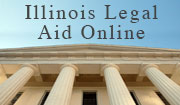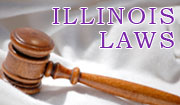Libraries

Terrorism
A Guide to Selected Government Information Available at WIU's Government Publications Library
Web version of this guide includes links to web resources.
Federal Government Information
9-11 Commission recommendations for U.S. diplomacy
This hearing addresses the range of the 9-11 Commission´s recommendations as well as the subject of public diplomacy. 2005
Y 4.IN 8/16:C 73/11
Averting nuclear terrorism
This hearing focuses on the challenges of averting nuclear terrorism. 2005
Y 4.IN 8/16:N 88/13
Combating terrorism through education
This hearing points out how outdated and poorly funded education systems in many Near Eastern and South Asian countries has led to an education deficit contributing to the rise of extremist ideologies and terrorist recruitment. It suggests that strong education systems are a way to counter extremism at its roots. 2005
Y 4.F 76/2:S.HRG.109-155
Diplomacy in the age of terrorism
A discussion of our foreign diplomacy and foreign policy and how partnerships forged with diplomacy are aiding in the war on terror. 2005
Y 4.IN 8/16:D 62/7
Iran: a quarter-century of state-sponsored terror
A look at how the Iranian regime has increasingly viewed terrorism as a tool to further its ideological and strategic aims and supports other terrorist organizations. 2005
Y 4.IN 8/16:IR 1/19
Terror attacks: are we prepared?
"This hearing is to review the status of our preparation and our capacity to deal with a significant biological event." 2005
Y 4.L 11/4:S.HRG. 108-797
Terrorism: emergency preparedness
This was a hearing to gain a better understanding of the types of terrorist attacks that could still take place, including those that could have an impact similar to a natural disaster, key success factors in planning for and responding to an attack and to identify any existing shortfalls that need attention to improve readiness. 2006
Y 4.J 89/2:S.HRG. 109-222
Terrorist Threats to the United States
This hearing focuses on how easy it is to enter the United States, especially through Canada, and contains statistics on Canadian immigration patterns and profiles on terrorists or otherwise dangerous persons. Also discusses how we can work with Canada to strengthen border security. 2000
Y 4.J 89/1:106/85
The Taliban: Engagement or Confrontation?
Details the United States' "two-pronged" strategy against the Taliban's human rights violations in Afghanistan and the surrounding area. American humanitarian aid to the Afghani people is also discussed. 2000
Y 4.F 76/2:S.Hrg.106-868
The Sudan Peace Act; and Condemning the Recent Order by the Taliban Regime of Afghanistan to Require Hindus in Afghanistan to Wear Symbols Identifying Them as Hindu
In May 2001 the Taliban ordered all Hindus to wear yellow ID cards, much like the Nazis did the Jews. The house wrote a resolution condemning the act. 2001
Y 4.IN 8/16:Su 2/5
Hawala and Underground Terrorist Financing Mechanisms
Examines the money transfer system of Hawalas and its use by legitimate citizens and illegal terrorists, such as Bin Laden. Includes testimony from an actual Hawalader from Virginia. Covers money laundering of other kinds as well, such as Al-Barakaat, which is known to be connected to al-Qaeda. The committee discusses what must be done to prevent illegal funding while allowing these communities to continue Hawala use. 2001
Y 4.B 22/3:S.Hrg.107-660
The Global Reach of Al-Qaeda
An almost psychological examination of al-Qaeda and a look at Muslim terrorists living in Latin America. Some next steps in dealing with terrorism are discussed, mostly involving pressuring governments to cooperate and modernize, but also including foreign assistance reform and public diplomacy. 2001
Y 4.F 76/2:S.Hrg.107-390
The United Nations and the fight against terrorism
This hearing looks at the United Nations' efforts in fighting terrorism and what reforms might be needed to make it more effective. 2005
Y 4.IN 8/16:T 27/14
What's Next in the War on Terrorism?
Trying to predict, in 2002, where the war on terrorism will next lead us geographically, strategically, domestically, and financially, and an assessment of our capabilities. Asks how we should approach this engagement differently than previous ones. Also questions how to respond to the criticisms and concerns of our allied nations. 2002
Y 4.F 76/2:S.Hrg.107-417
Operation Enduring Freedom
A more technical look at terrorism and the war against it, and a discussion of our military operations and equipment. Also contains a large question and answer segment, although many of the answers, especially those concerning Bin Laden and Iran, are deleted from the print. 2002
Y 4.AR 5/3:S.Hrg.107-801
An Overview of International Terrorist Organizations
This document talks about tactical and financial measures designed to prevent terrorists from functioning, such as expanding world government's rights and strictly regulating hawaladers. In addition to al-Qaeda, lesser-known Islamic groups and groups such as Columbia's FARC, are discussed. A list of the State Department's counterterrorsm programs is given. 2003
Y 4.IN 8/16:T 27/7
Transnational Terrorism & the al-Qaeda Model
This article focuses on the organization of al-Qaeda and how it has infiltrated the United States and ally nations. It shows that now, due to the high state of technology available, terrorism is something that has to be attacked differently than it was in the past. Also, moral and ethical dilemmas associated with combating terrorism are discussed.
Parameters. Vol. 32 No. 2, Summer 2002 pp.33-46.
D 101.72:32/2
The World According to Usama Bin Laden
An in-depth attempt to explain Bin Laden's behavior, covering basic Islam, Islamic Fundamentalism, and Bin Laden's personal history. The author suggests that America re-examine its war on terrorism to better incorporate such factors.
Naval War College Review. Vol. 54 No. 4, Autumn 2001 pp.11-35.
D 208.209:54/4
Unfinished Business in Afghanistan: Warlordism, Reconstruction, and Ethnic Harmony
A good seemingly unbiased overview of some of the issues present in Afghani society and their possible solutions.
GOVWEB.Y 3.P 31: 20/105
The Sociology and Psychology of Terrorism: Who Becomes a Terrorist and Why?
This is a fascinating paper breaking down terrorist motivations and profiles. This covers all kinds of terrorists the world over, not just those currently in the spotlight, with a lot of focus on female terrorists.
GOVWEB.L 31.2:2002009082
The 9/11 Commission Report
This is the final report of the National Commission on Terrorist Attacks Upon the United States. Detailed minute-by-minute coverage of the plane hijackings on 9/11 and a thorough source of information on surrounding events and atmosphere. 2004.
Y 3.2:T27/2/Final or The Commission's Website
Legal Information
Law and the War on Terrorism
An entire volume of essays and articles on an array of issues having to do with terrorism and the effect that it has on American society, foreign relations, and military operations.
Harvard Journal of Law and Public Policy. Vol 25, No. 2 Spring 2002
Dealing with the Modern Terrorist
This article discusses the changing nature of terrorism around the world. It explains how terrorists are now able to use sophisticated and high-tech equipment and methods to carry out their missions, and how the terrorists themselves have changed mentally. The Italian Red Brigades of the 1960's are used as a case study on how modern terrorist groups function and their defeat is an example of tactics the U.S. should use in their fight against terror.
Criminal Justice Policy Review. Vol. 12, No. 4 December 2001 pp.255-281
Multinational Approaches to Eradicating International Terrorism
U.N. Security Council Resolution 1373, which is the first time the U.N. has asked all member states to cooperate in taking action against terrorists, is thoroughly analyzed in this article. Issues involving the United States are highlighted.
International Lawyer. Vol 36 No. 1 Spring 2002 pp. 67-76
http://wiu.edu/libraries/govpubs/guides/terrorism.php
Subject Guides
- FDLP LibGuides
- Abortion
- Adoption
- Advertising and the Law
- Affirmative Action
- Agriculture
- AIDS
- Alcohol and Related Problems on Campus
- Alternative Dispute Resolution
- Alternative Medicine
- Americans with Disabilities Act
- Animal Research and Humane Care
- Asset Forfeiture
- Aviation Safety
- Capital Punishment
- Censorship - Nonpolitical
- Censorship - Political
- Child Abuse
- Child Care
- Children and Television
- Citizenship & Immigration Services
- Cloning
- Confined Animal Feeding Operations
- Cookbooks
- Cuban Missile Crisis
- Cybercrime
- DNA
- DNA Testing of Criminals
- Domestic Violence
- Drinking and Driving
- Drone Warfare
- Drug Legalization
- Drug Testing
- Earthquakes (Illinois)
- Eating Disorders
- Elder Abuse
- Electronic Surveillance
- Endangered Species and Wildlife Conservation
- Euthanasia
- Federalism
- Financial Crisis
- Flag Desecration
- Gangs
- Global Warming
- Gulf War Illness
- Gun Control
- Hate Crimes
- Hazardous Waste Disposal
- Health Care Reform
- Homelessness
- Home schooling
- Homosexuals in the Military
- Intellectual Property
- JFK Assassination
- Juvenile Justice
- Korean War
- Learning Disabilities
- Literacy
- Methamphetamine
- Occupational Health and Safety
- Operation Desert Shield/Storm
- Police Misconduct
- Pornography
- Prison Reform
- POW and MIAs
- Problems of Adolescence
- Product Liability
- Rape
- Reproductive Technology
- Same-Sex Marriage
- School Prayer
- School Violence
- Seat Belts
- Sexual Harrassment in Education
- Sexual Harrassment in the Workplace
- Sexual Orientation Discrimination
- Small Business
- Space Exploration
- Terrorism
- Tobacco
- Unmanned Aerial Vehicles
- Vietnam War
- Violence in Mass Media
- Welfare Reform
- Women in Business
- World War I
- World War II





Connect with us: